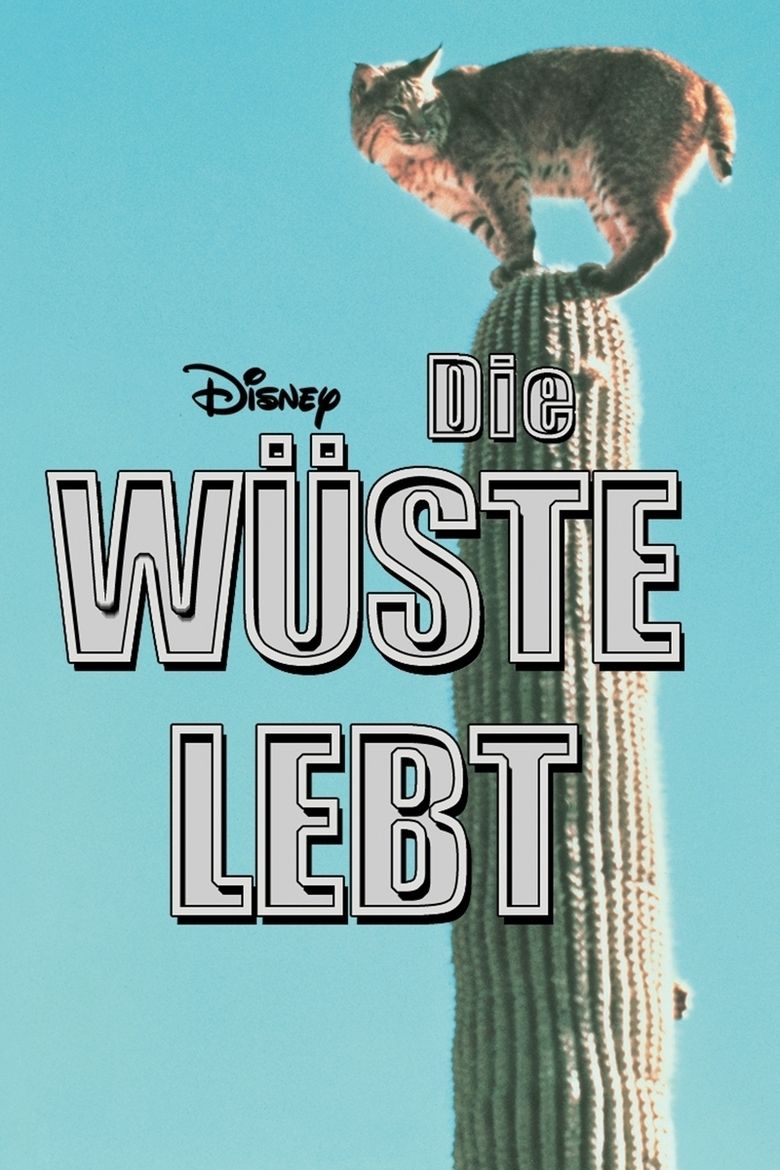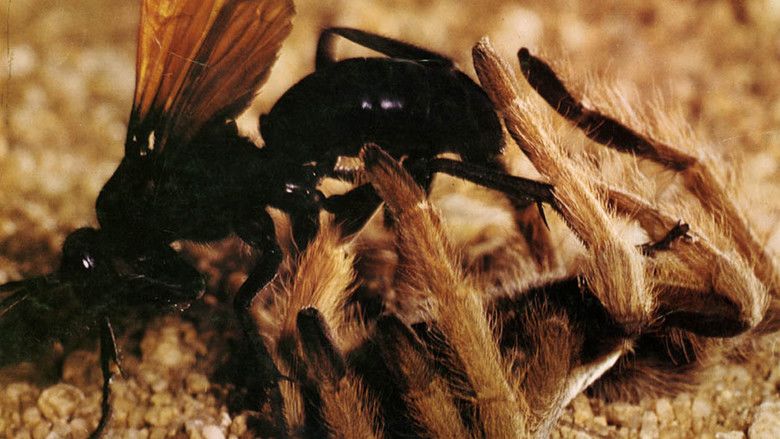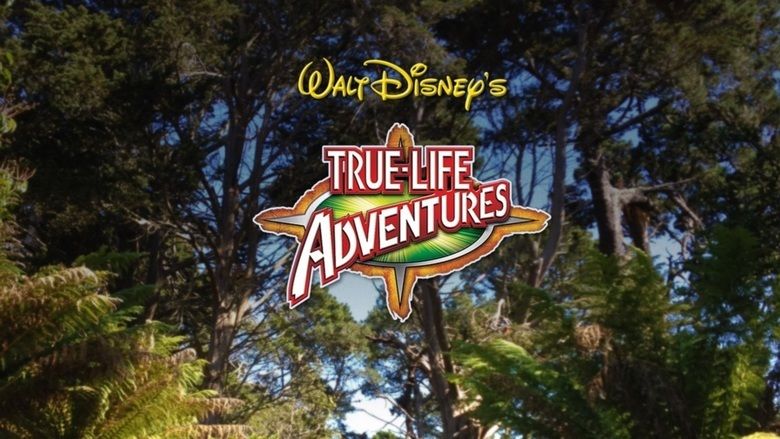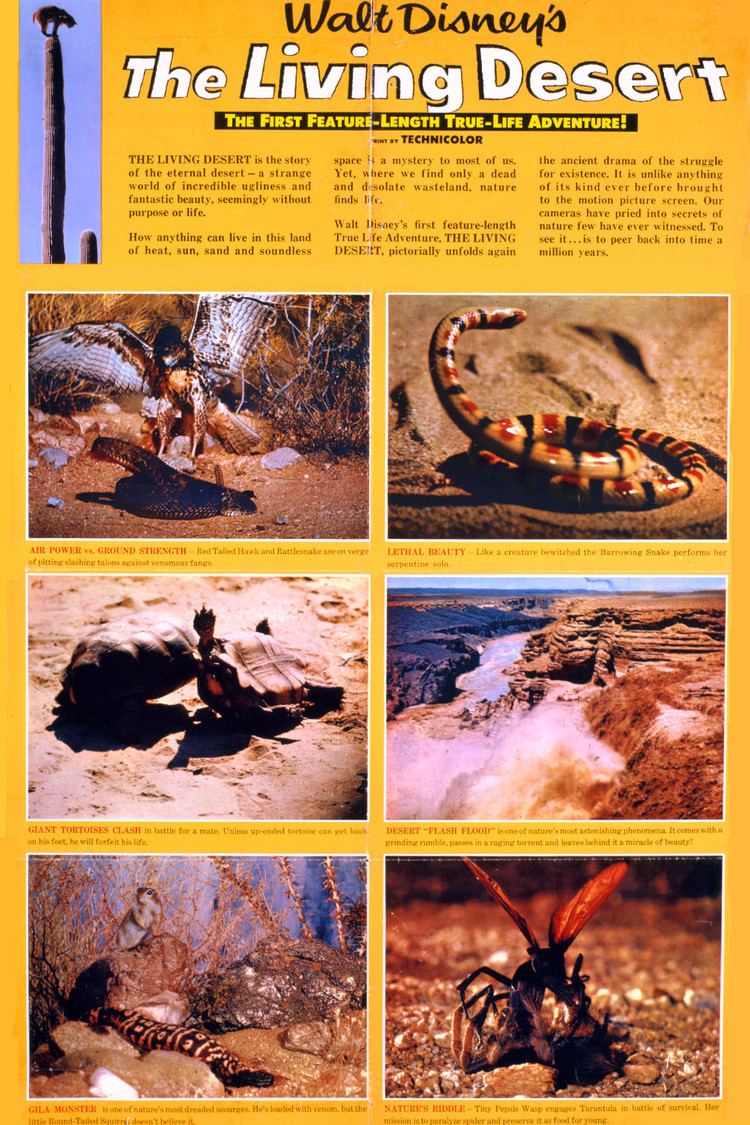The Living Desert
7.8 /10 1 Votes
78% Rotten Tomatoes Genre Family, Documentary Film series True-Life Adventures Duration Country United States | 7.7/10 IMDb Language English | |||||||||||||||||||||||||||||||||
 | ||||||||||||||||||||||||||||||||||
Release date November 10, 1953 Similar movies 2012 , Cloverfield , The Purge: Anarchy , 28 Weeks Later , The Grey , Battle: Los Angeles | ||||||||||||||||||||||||||||||||||
Watch the living desert disney movies anywhere video previo do filme the living desert 1953
The Living Desert is a 1953 American nature documentary film that shows the everyday lives of the animals of the desert of the Southwestern United States. The movie was written by James Algar, Winston Hibler, Jack Moffitt (uncredited) and Ted Sears. It was directed by Algar, with Hibler as the narrator and was filmed in Tucson, Arizona. The film won the 1953 Academy Award for Best Documentary Feature.
Contents
- Watch the living desert disney movies anywhere video previo do filme the living desert 1953
- Stingeree from the living desert 1953
- Production
- Release
- Honors
- References

It is featured in the 2006 DVD Walt Disney Legacy Collection Volume 2: Lands of Exploration.

Stingeree from the living desert 1953
Production

The Living Desert was the first feature-length film in Disney’s True-Life Adventures series of documentaries focusing on zoological studies; the previous films in the series, including the Academy Award-winning Seal Island, were short subjects.
The documentary was filmed in Tucson, Arizona. Most of the wildlife shown in the film was donated to what would soon become the Arizona-Sonora Desert Museum.
The film was inspired by 10 minutes of footage shot by N. Paul Kenworthy Jr., a doctoral student at the University of California at Los Angeles. Kenworthy’s footage of a battle between a tarantula and a wasp intrigued Disney, who funded a feature-length production following the lives of diverse desert species. Disney was highly supportive of Kenworthy’s work and its impact on nonfiction filmmaking, stating, “This is where we can tell a real, sustained story for the first time in these nature pictures.”
Release
Prior to the production of The Living Desert, Disney was releasing his films through RKO Radio Pictures. But due to a long-frayed relation with the studio, which had little enthusiasm for the producer's documentary releases, Disney opted to sever his relation with RKO and create his own distribution subsidiary – Buena Vista Distribution, which he named after the street where his office was located.
The Living Desert received some criticism for bringing unsubtle humor to its scenes of desert life – Bosley Crowther of The New York Times called Disney to task for adding jokey musical effects to several of the film’s scenes, including hoedown music for a sequence involving a scorpion battle. Nonetheless, the film was a commercial success: the US$300,000 production grossed US$4,000,000 at the box office.
Honors
The Academy Award that Disney earned for The Living Desert helped the producer make history as the individual with the most Oscar wins in a single year. At the 26th Academy Awards, in addition to winning the Best Documentary Feature Oscar, Disney also won the Academy Award for Best Animated Short Film for Toot, Whistle, Plunk and Boom, the Academy Award for Best Documentary Short Subject for The Alaskan Eskimo and the Academy Award for Best Short Subject (Two-Reel) for Bear Country.
In addition to its Oscar, the film also won the International Prize at the 1954 Cannes Film Festival, an award at the Berlin Film Festival and a special achievement award from the Golden Globe Awards. In 2000, the film was selected for preservation in the United States National Film Registry by the Library of Congress as being "culturally, historically, or aesthetically significant".
References
The Living Desert WikipediaThe Living Desert IMDbThe Living Desert Rotten TomatoesThe Living Desert themoviedb.org
